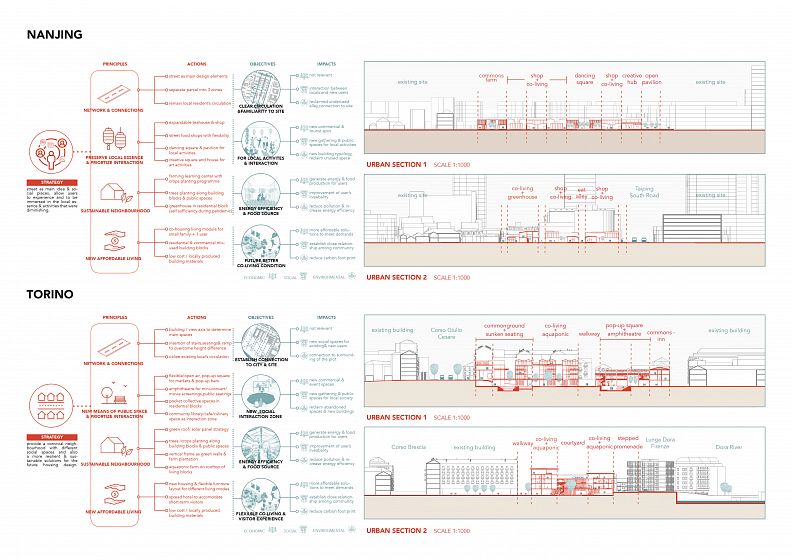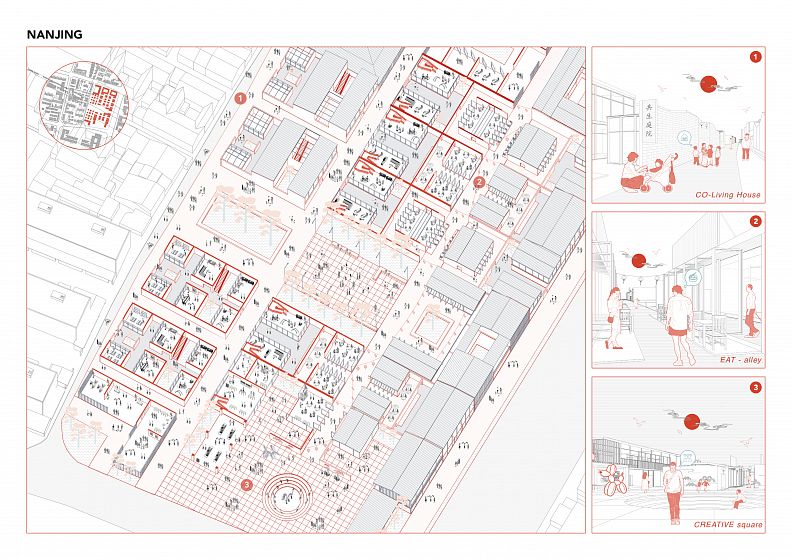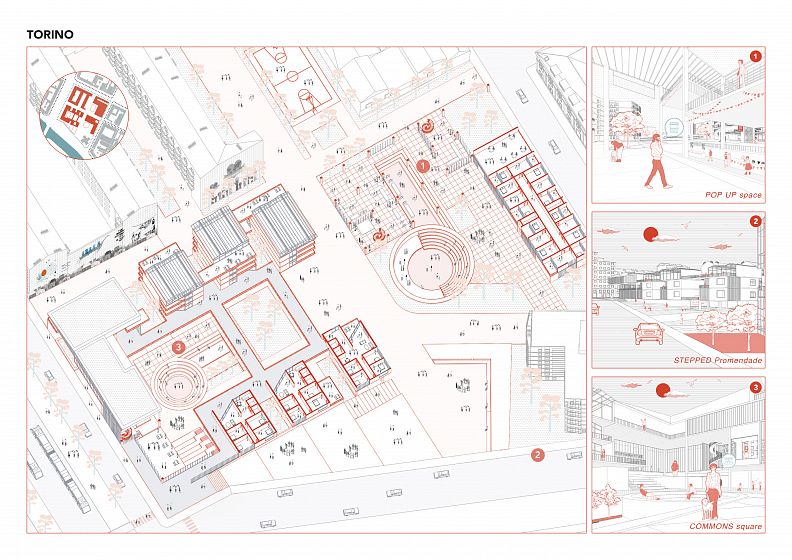The Commons

Project idea
COMMON / kom–uhn / NOUN
: where the word common means shared by, coming from or done by groups, at the same time, it also means occuring, usual or familiar.
Project description
The Commons aims to preserve the local essence of the place & at the same time bring local community together by prioritizing local habits, activities & user’s familiarity towards the site. The master plans were started with similar approaches where the building & view axis around the site are drawn to have an idea on how to place the blocks, and then create the possible connection to the existing buildings & site, without making drastic change to its circulation and also to place the building blocks following the existing zoning of the site.
For both projects, the concept comes from the definition of social places, where users meet and interact, the chinese culture attributes fundamental role to the street as place of sociality. Therefore, for Nanjing site, I extracted that concept and designed streets as the backbone for my project, and placed different blocks & function according to the zoning, the traditional courtyard house is used as the base typology and a new courtyard house was developed from there to house different functions. The new courtyard house’s façade are facing Xiao Song Tao alley, forming a new street view, transformed the previously underused alley.
While the European on the hand, treat square as their community space ,therefore, for Turin design, public seating and the squares that were designed based on the axis are the main social places in the design, and also placing the living blocks and commercial accordingly based on the existing site. The level difference in Turin is also taken into consideration, where lower ground floor used to accommodate all public spaces. The buildings levels are defined by its functions and also designed to be staggered towards the riverside.
There is slight similarities for both sites, where flexibility of spaces incorporated so that each space can have the possibility to be versatile even during the emergency period, but it was implemented by different methods, for example Turin has a flexible square for different types of event & pop up commercial space for restaurant and cafes. While Nanjing commercial space for example the eateries & teahouse are equipped with pivot wall, so that it can be expand to accomodate different size of group and the square can also be used to host different local art events. The idea of farming, small pocket green area/ co-living social area are also adopted in both sites to help achieve a self- supply neighbourhood.
Technical information
this is a master plans that were carried out in different cities that have different cultural backgrounds and was intended to be treated with similar strategies that leads to different outcomes. Several analysis were also carried out to shows the real estate value of two projects.







